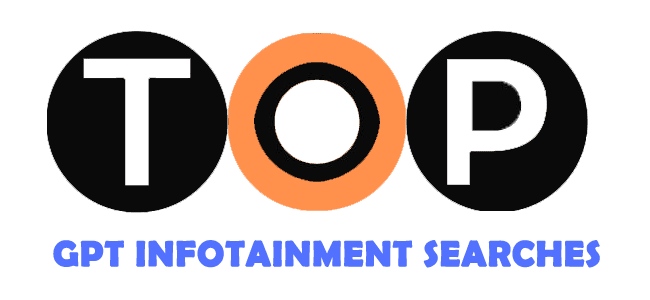In today’s diverse and interconnected world, the ability to communicate effectively is paramount. While spoken languages are undoubtedly crucial, there exists another form of communication that holds immense significance – sign language. More than just a means of communication for the Deaf community, learning sign language offers a plethora of benefits that extend far beyond linguistic proficiency.
Introduction Benefits of Learning a Sign Language
What is Sign Language?
Sign language is a form of visual communication utilizing hand gestures, facial expressions, and body movements to express ideas and convey meaning. It is not merely a representation of spoken language but a complete and distinct language with its own grammar and syntax.
Importance and prevalence
Sign language is not limited to the Deaf community; it is also used by individuals with speech and language disorders, as well as those who communicate with them, such as family members, educators, and healthcare professionals.
Cognitive Benefits of Learning Sign Language
Enhancing brain function
Research suggests that learning and using sign language can stimulate various regions of the brain, leading to enhanced cognitive abilities, including improved memory, problem-solving skills, and spatial reasoning.
Improving memory and attention
The act of simultaneously processing visual and linguistic information while learning sign language can improve memory retention and enhance attentional focus.
Linguistic Benefits of Learning Sign Language
Understanding language structure
Learning sign language provides insights into the structure and function of all languages, fostering a deeper understanding of linguistics and communication theory.
Improving communication skills
Mastering sign language not only enables individuals to communicate with Deaf individuals but also enhances their overall communication skills, including nonverbal communication and active listening.
Social Benefits of Learning Sign Language
Facilitating inclusivity and diversity
By learning sign language, individuals contribute to creating a more inclusive society where Deaf individuals are not marginalized but fully integrated into various social settings.
Building connections within the Deaf community
Proficiency in sign language allows individuals to forge meaningful connections with Deaf individuals, fostering friendships, partnerships, and collaborations based on mutual respect and understanding.
Career Advantages of Learning Sign Language
Expanding job opportunities
In today’s globalized world, businesses and organizations are increasingly recognizing the value of hiring individuals proficient in sign language to enhance accessibility and inclusivity in the workplace.
Strengthening professional relationships
The ability to communicate with Deaf colleagues, clients, and customers can strengthen professional relationships, leading to improved teamwork, customer satisfaction, and business success.
Cultural Benefits of Learning Sign Language
Appreciating Deaf culture
Learning sign language provides insight into Deaf culture, history, and traditions, fostering appreciation, respect, and empathy for Deaf individuals and their experiences.
Fostering empathy and understanding
By learning sign language, individuals develop empathy and understanding towards people with different communication needs, breaking down barriers and promoting social cohesion.
Psychological Benefits of Learning Sign Language
Boosting self-confidence
Mastering a new language like sign language boosts self-confidence, self-esteem, and self-efficacy, empowering individuals to overcome challenges and achieve their goals.
Reducing stress and anxiety
Engaging in sign language communication can have therapeutic effects, reducing stress and anxiety levels by providing an alternative means of expression and connection.
Educational Benefits of Learning Sign Language
Supporting language development in children
Exposure to sign language from an early age can support language development in children, enhancing their cognitive abilities, literacy skills, and academic achievement.
Enhancing educational outcomes for Deaf students
For Deaf students, learning sign language not only facilitates academic success but also fosters a sense of belonging, identity, and pride in their cultural and linguistic heritage.
Practical Benefits of Learning Sign Language
Aid in emergency situations
In emergency situations where verbal communication is impossible or limited, sign language can be a lifesaving tool for conveying vital information and seeking assistance.
Useful in noisy environments
Sign language can be particularly useful in noisy environments or situations where verbal communication is challenging, ensuring effective communication without relying solely on spoken language.
Personal Enrichment through Learning Sign Language
Opening new avenues for personal growth
Learning sign language opens up new avenues for personal growth, self-discovery, and cultural enrichment, enriching one’s life experiences and perspectives.
Adding depth to one’s life experiences
By embracing sign language and engaging with Deaf culture, individuals add depth and richness to their life experiences, broadening their horizons and fostering a deeper appreciation for diversity.

Overcoming Communication Barriers
Building bridges between Deaf and hearing people
Sign language serves as a bridge that connects Deaf and hearing individuals, enabling meaningful communication, understanding, and collaboration across linguistic and cultural divides.
Promoting inclusivity in society
By promoting the use of sign language and advocating for accessibility, individuals contribute to creating a more inclusive society where everyone, regardless of their communication needs, can fully participate and thrive.
Accessibility and Sign Language
Making information accessible to all
Ensuring access to sign language interpretation and resources makes information, services, and opportunities more accessible to Deaf individuals, empowering them to fully participate in all aspects of society.
Ensuring equal opportunities for Deaf individuals
By advocating for the recognition and inclusion of sign language, individuals champion equal rights and opportunities for Deaf individuals, promoting social justice and equality for all.
Sign Language as a Universal Language
Its potential for global communication
Sign language transcends linguistic and cultural barriers, offering a universal means of communication that can facilitate understanding and connection among people from diverse backgrounds.
Breaking down linguistic barriers worldwide
By promoting sign language as a universal language, individuals contribute to breaking down linguistic barriers worldwide, fostering peace, cooperation, and mutual respect among nations.
Future Trends in Sign Language Learning
Increasing demand for sign language interpreters
As awareness of the importance of sign language grows, so does the demand for qualified sign language interpreters in various settings, including education, healthcare, and business.
Technological advancements in sign language education
Advancements in technology, such as virtual reality and online learning platforms, are revolutionizing sign language education, making it more accessible, interactive, and engaging for learners worldwide.
Conclusion
In conclusion, the benefits of learning sign language extend far beyond mere communication. From cognitive and linguistic advantages to social, cultural, and psychological benefits, mastering sign language enriches individuals’ lives and contributes to a more inclusive and understanding society. By embracing sign language, we not only empower ourselves but also promote equality, accessibility, and diversity for all.
FAQs:
Is it difficult to learn sign language?
Learning any new language requires time and dedication, but with practice and patience, anyone can learn sign language.
Can learning sign language benefit me professionally?
Absolutely! Proficiency in sign language can open up a wide range of career opportunities, especially in fields such as education, healthcare, and social services.
Do I need to be Deaf to learn sign language?
Not at all! Sign language is for everyone. Whether you’re Deaf, hard of hearing, or hearing, learning sign language can enrich your life and broaden your horizons.
How long does it take to become fluent in sign language?
The time it takes to become fluent in sign language varies depending on factors such as the individual’s learning style, frequency of practice, and exposure to the language. However, consistent practice and immersion can expedite the learning process.
Where can I learn sign language?
There are many resources available for learning sign language, including classes, online tutorials, books, and community organizations. Additionally, seeking out Deaf mentors and immersion experiences can greatly enhance your learning journey.

